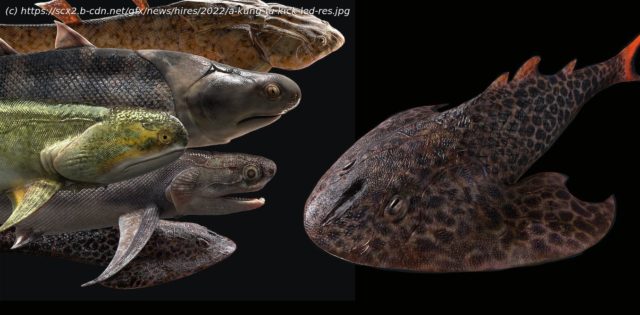Some of the world’s most significant fossil discoveries have come from China. These include amazing feathered dinosaurs, the earliest modern mammals, and some of the oldest-known animals on Earth.
October 1, 2022
Some of the world’s most significant fossil discoveries have come from China. These include amazing feathered dinosaurs, the earliest modern mammals, and some of the oldest-known animals on Earth.
Today, four new papers published in Nature carry on this tradition by revealing the world’s oldest well-preserved jawed fishes, dating between 436 million and 439 million years ago to the start of the Silurian period.
The fossil discoveries all come from new fossil sites in the Guizhou and Chongqing Provinces in China. The Chongqing site was found in 2019, when three young Chinese paleontologists were play fighting, and one was kung-fu kicked into the outcrop. Rocks tumbled down, revealing a spectacular fossil inside.
The research teams behind the papers are led by Zhu Min of the Institute of Vertebrate Paleontology and Paleoanthropology in Beijing. Min told me: « The discovery of the Chongqing lagerstatte (a « lagerstatte » is a fossil site of exceptional preservation) is indeed an unbelievable miracle of fossil hunting. Suddenly we realized we have found a jaw-dropping lagerstatte. We are now close to the core of untangling the fishy tree of early jawed vertebrates. »
What kinds of fishes were they?
Most fishes today fall into two main groups:
The origins of these living fish groups are now much clearer due to the new findings of the oldest complete fishes from China.
These were shark-like fishes. Some were placoderms, an extinct class of armored fish that had bony plates forming a solid shield around the head and trunk.
Others were ancestral kinds of sharks called acanthodians. These are extinct forms of « stem-sharks » that evolved as a separate branch—or stem—of the evolutionary line that led to modern sharks.
Placoderms are the earliest-known jawed vertebrates. Researching them is important as they help reveal the origins of many parts of the human body (including our hearts and faces).
A small flattened placoderm called Xiushanosteus, about three centimeters long, is the most common fish found at the new Chongqing site.
Its skull shows paired bones which reflect those on top of our own heads.






